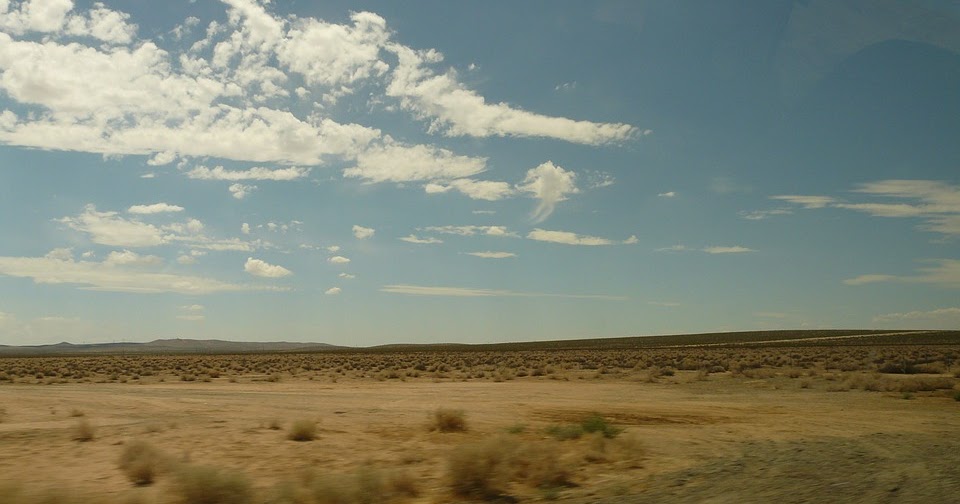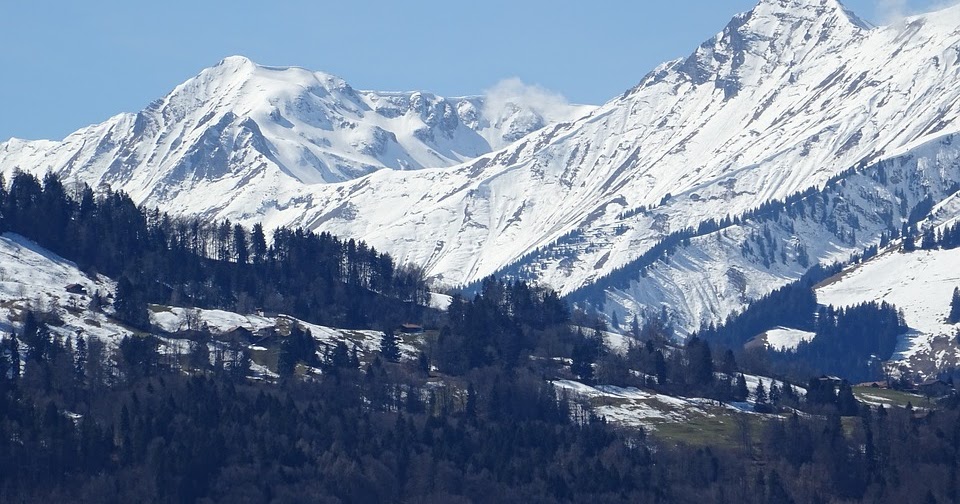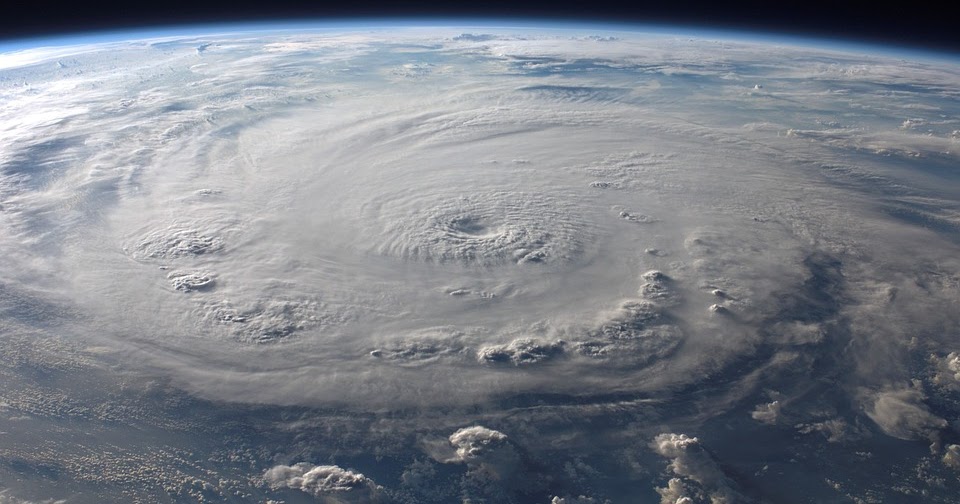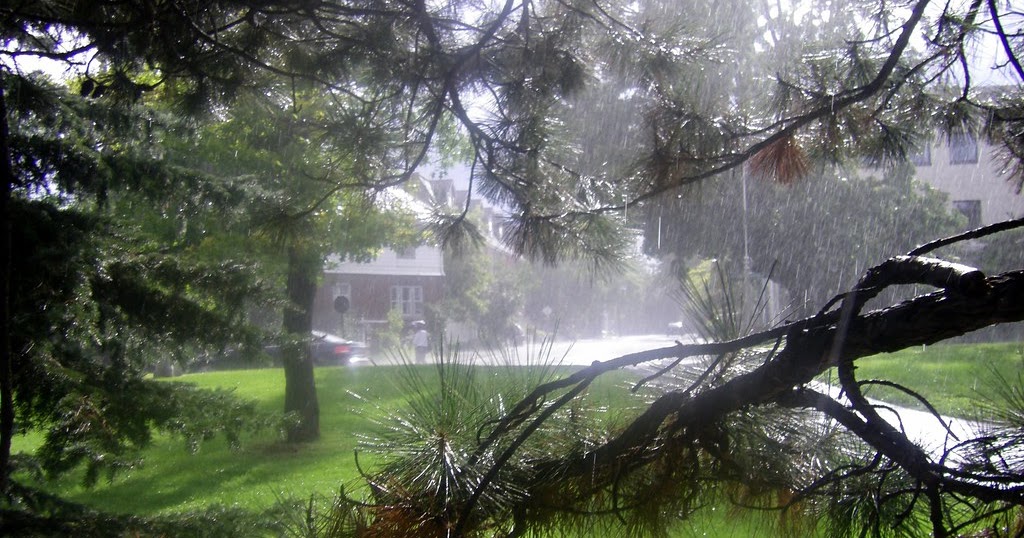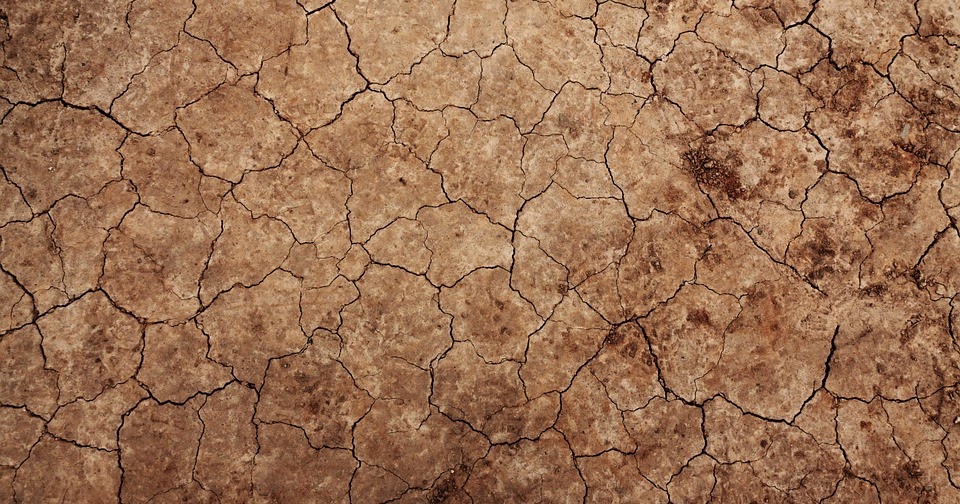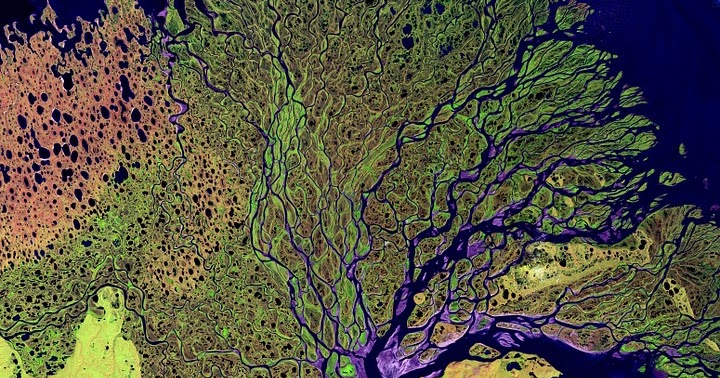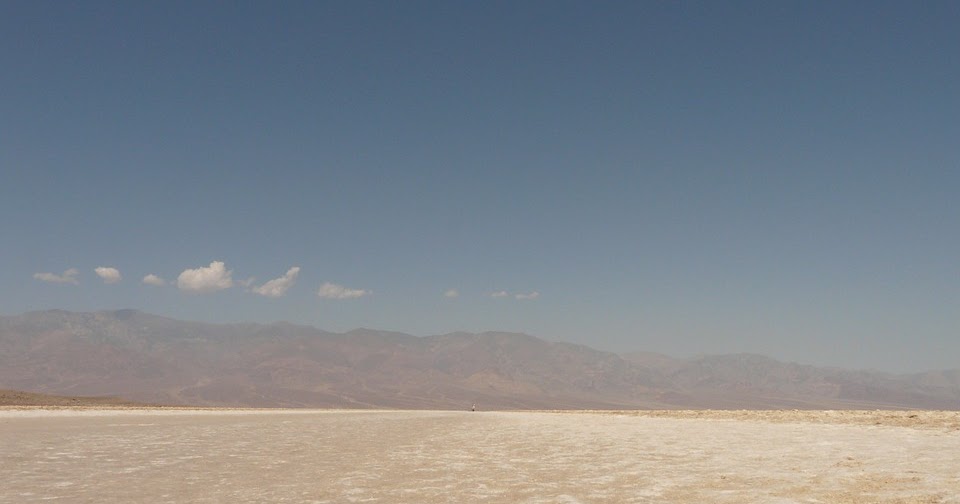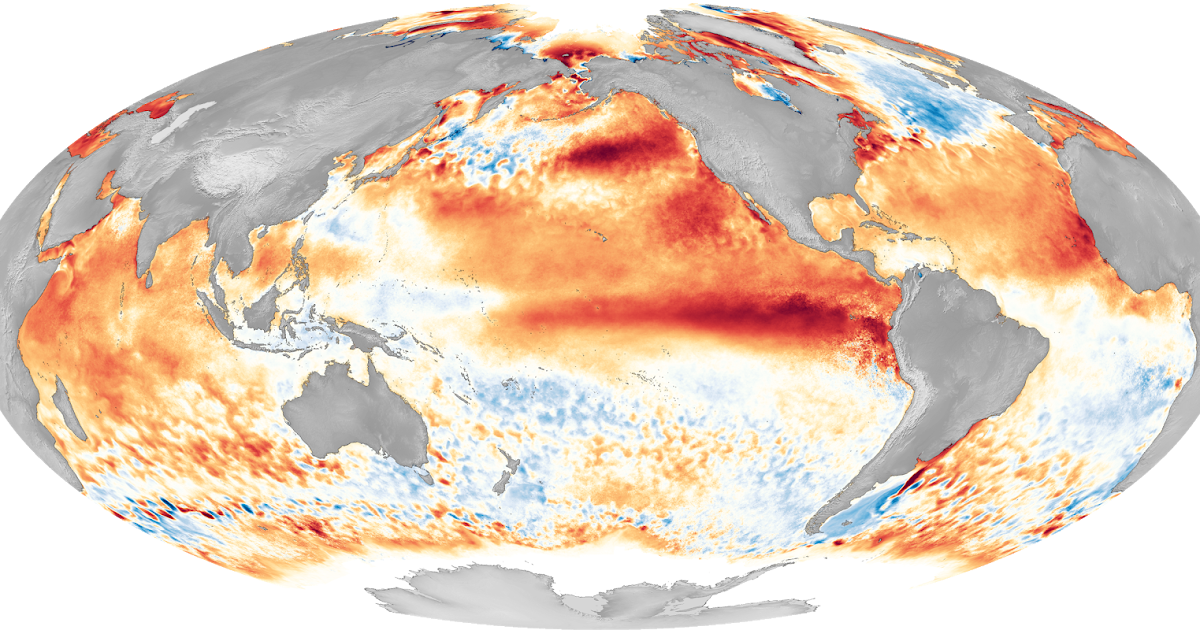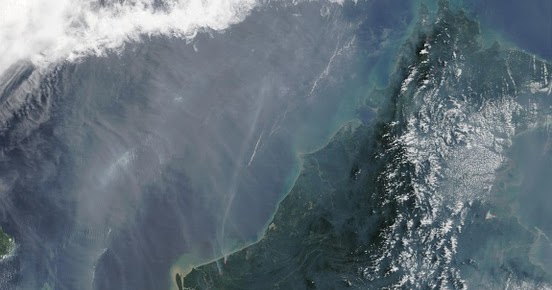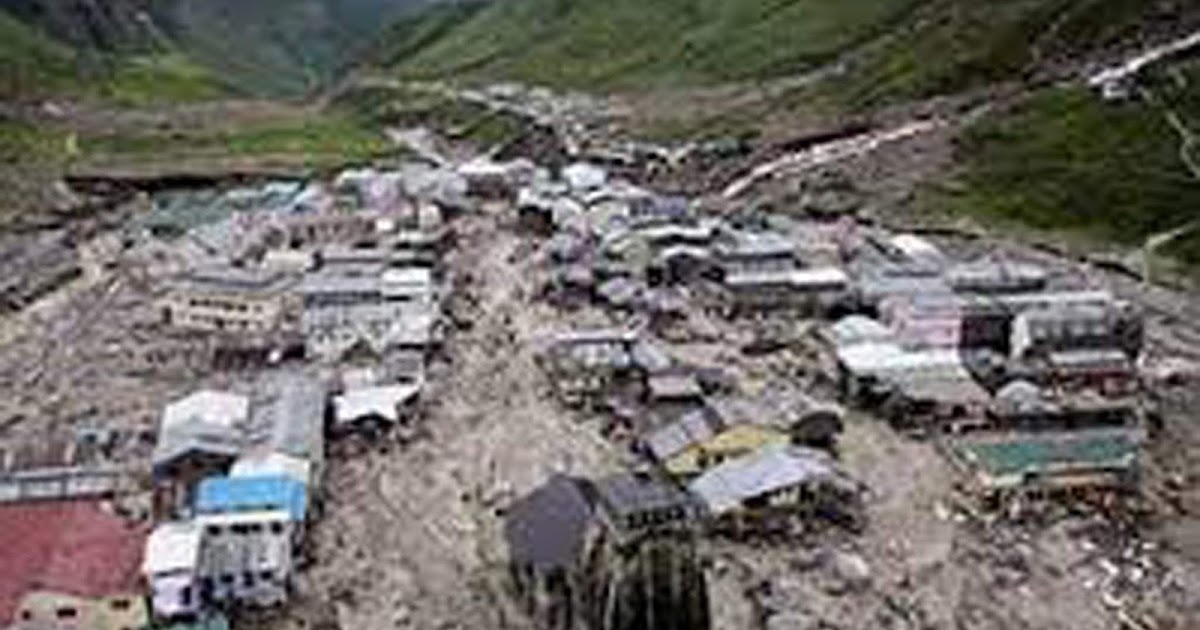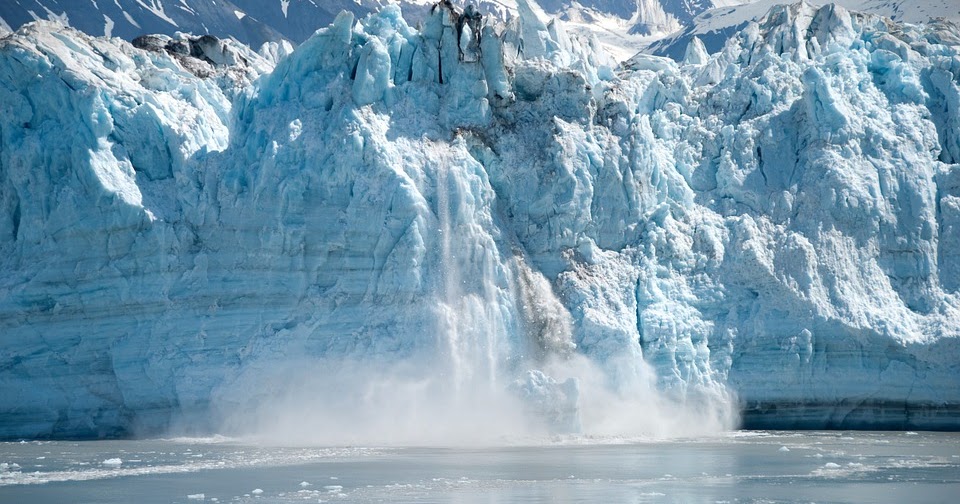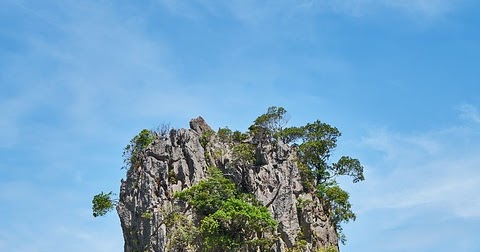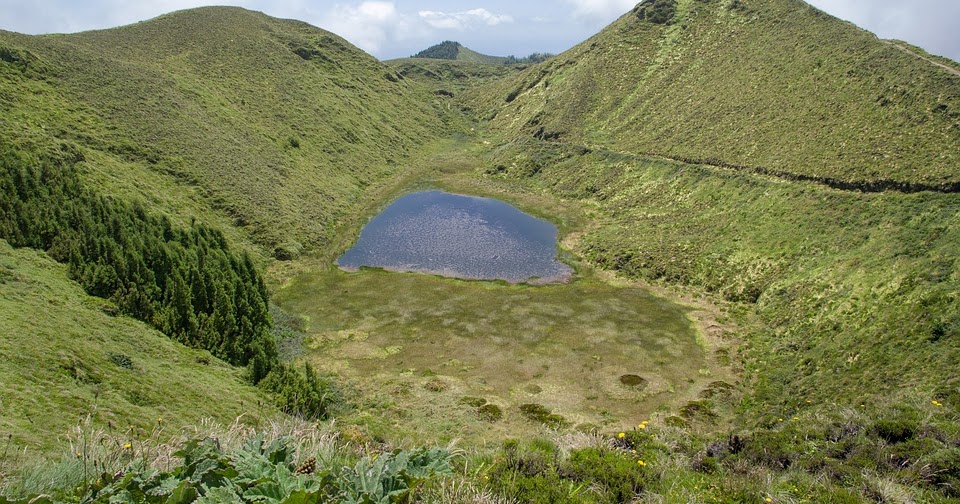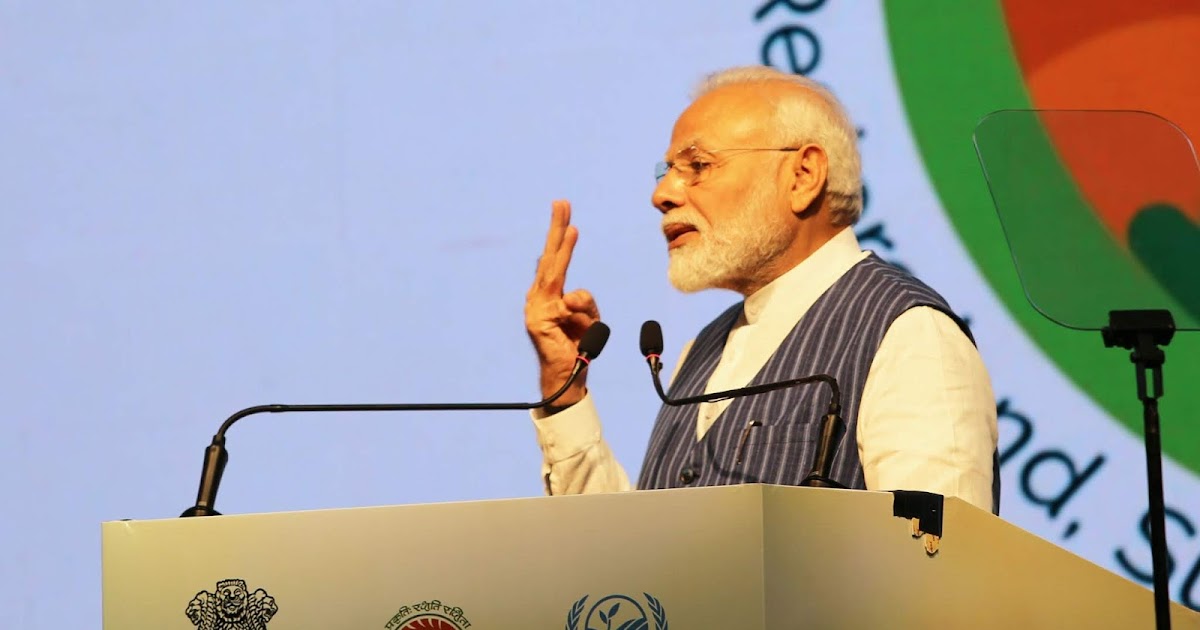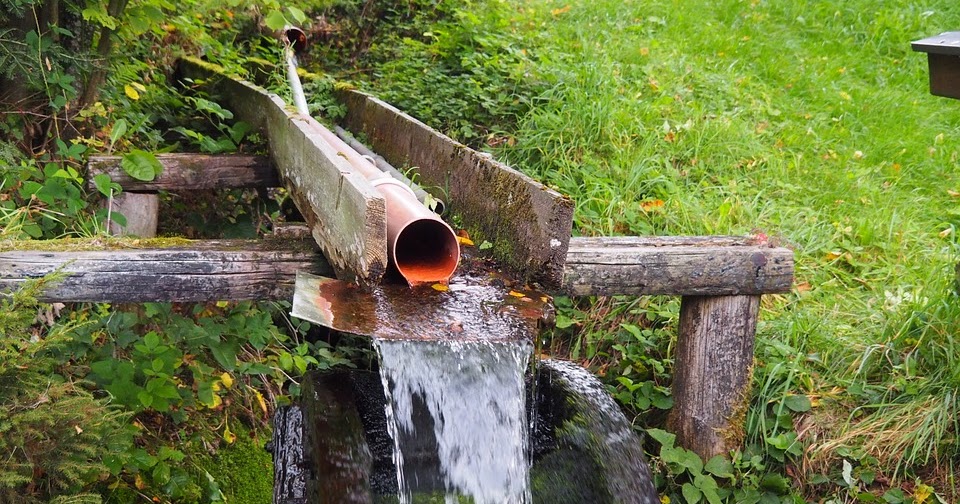COP 14 of UNCCD inaugurated
Day Two of COP14 seized deliberations on Science & Technology and Review of Implementation of the Convention
By Malini Shankar, (Digital Discourse Foundation) 3.09.19
The second day of the 14th Conference of Parties (COP14) to the United Nations Convention to Combat Desertification (UNCCD) focussed on the theme “Restore land, Sustain future”. COP 14 was a beehive of frenetic activity today as such summits go.
Amongst today’s meetings the Committee meeting on Science & Technology focussed on adoption of the COP 14 agenda and organization. Science and Technology interface becomes a critical area to combat Desertification.
The age of low cost sustainable technologies manifesting as “Apps” for instance can be game changers in calibrating amount of Carbon sequestered or Oxygen generated from a Re-greening initiatives. Such “apps” can breach the literacy and language barriers and help grass roots workers integrate for a social and environmental cause that will only reward them in the long run. Application of such low cost technology in such grass roots work has immence significance in the Emerging Economies of the South.
Similarly drones can be used for mass seeding in arid lands with clear focus of neutralising land degradation and Re-greening an identified plot of desertified area. Drones may rob livelihoods one may argue, but it certainly saves training costs.
Delivering the opening remarks of the 18th CRIC session, Executive Secretary, UNCCD, Mr. Ibrahim Thiaw said, “CRIC 18 could be a real milestone. We will finalize the first UNCCD reporting process - using progress indicators and setting baselines. We will be able to measure progress in implementing the Convention against these well into the future”.
Meeting of the Committee for the Review of the Implementation of the Convention (CRIC) and key discussions such as, “Climate Co-Benefits of Programmes to Combat Land Degradation” were also part of the day’s agenda at COP 14.
Building resilience for communities living in coastal areas in the current day and age of human induced Climate Change is the challenge for people from all walks of life. Technological innovations to building resilience for coastal and island communities as well as India’s Space Prowess to combat desertification are all part of the various exhibitions at the Venue of COP 14.
Science Day opens on Day 4 at COP14
Secretary (MoEF&CC) chairs Open-Dialogue session on inclusion of activities of civil society organizations in COP
By Malini Shankar Digital Discourse Foundation 5.09.19
The 14th Conference of Parties (COP14) to United Nations Convention to Combat Desertification (UNCCD) entered Day 4 of its 12-day long Conference. With COP14 hosting ‘thematic days’ that focus on the different areas of work of the Convention, “Science Day” was observed today, wherein the outcomes from the recent scientific assessments of Climate Change, Biodiversity and Land degradation were featured. “Bringing science and policy together is a lot like trying to mix oil and water. It seems to be impossible. Science is reductionist. It reduces complex phenomenon into their fundamental parts. Scientists are always testing hypotheses, calculating probabilities and reporting uncertainties. Policy making on the other hand is all about synthesis. Combining elements to try and form a coherent whole” said Mr. Ibrahim Thiaw, UNCCD, Executive Secretary, in his welcoming remarks at the Science Day. This segment of the Rio Conventions Pavilion “Science Day” brings together four major scientific assessments on land conducted over the past two years.
In the past four months, there have been two significant reports- Climate Change and Land by the Intergovernmental Panel on Climate Change (IPCC) and assessment of biodiversity and ecosystem services conducted by the Intergovernmental Platform of Biodiversity and Ecosystem Services (IPBES), both pointing that land has transformed significantly, and are testing the limits of its resilience.
Key messages emerging from the Science Day are intended to inform the high-level segment of the 14th Session of the Conference of the Parties of the UNCCD, and to stimulate and equip the science community, land managers and civil society organisations with practical ideas for progressing LDN for multiple benefits.
Meanwhile, African countries came together to address land degradation and migration nexus. “Migration linked to desertification, land degradation and drought is not an issue of the future – it is our current reality from Africa to Asia, through South America and the Pacific islands. We cannot afford not to take immediate action – otherwise the world will face an immense crisis”, said Mrs Mariam Traore Chazalnoel, International Organisation for Migration, Environment and Climate Change Policy Officer,
To address migration driven by land degradation, 14 African countries launched the Initiative of Sustainability, Stability and Security (3S) which aims at restoring land and creating green jobs for migrants and vulnerable groups. The 3S Initiative is starting its implementation phase engaging countries at the highest political level.
In addition, the Secretary,(MOEF&CC), Shri CK Mishra also chaired an Open-Dialogue session on inclusion of activities of civil society organizations within the official programme of work of the Conference of the Parties (COP) at the UNCCD COP14.
India is the host country of UNCCD COP14 beginning from 2nd to 13th September 2019. The Prime Minister, Mr. Narendra Modi will inaugurate the high-level segment meeting on 9th September, 2019 and will also address the August gathering at the Conference. Union Minister for Environment, Forest & Climate Change (MOEF&CC), Shri Prakash Javdekar earlier stated that good outcomes are expected of the UNCCD which will be notified in the Delhi Declaration.
Science Day opens on Day 4 at COP14
Secretary (MoEF&CC) chairs Open-Dialogue session on inclusion of activities of civil society organizations in COP
By Malini Shankar Digital Discourse Foundation 5.09.19
The 14th Conference of Parties (COP14) to United Nations Convention to Combat Desertification (UNCCD) entered Day 4 of its 12-day long Conference. With COP14 hosting ‘thematic days’ that focus on the different areas of work of the Convention, “Science Day” was observed today, wherein the outcomes from the recent scientific assessments of Climate Change, Biodiversity and Land degradation were featured. “Bringing science and policy together is a lot like trying to mix oil and water. It seems to be impossible. Science is reductionist. It reduces complex phenomenon into their fundamental parts. Scientists are always testing hypotheses, calculating probabilities and reporting uncertainties. Policy making on the other hand is all about synthesis. Combining elements to try and form a coherent whole” said Mr. Ibrahim Thiaw, UNCCD, Executive Secretary, in his welcoming remarks at the Science Day. This segment of the Rio Conventions Pavilion “Science Day” brings together four major scientific assessments on land conducted over the past two years.
In the past four months, there have been two significant reports- Climate Change and Land by the Intergovernmental Panel on Climate Change (IPCC) and assessment of biodiversity and ecosystem services conducted by the Intergovernmental Platform of Biodiversity and Ecosystem Services (IPBES), both pointing that land has transformed significantly, and are testing the limits of its resilience.
Key messages emerging from the Science Day are intended to inform the high-level segment of the 14th Session of the Conference of the Parties of the UNCCD, and to stimulate and equip the science community, land managers and civil society organisations with practical ideas for progressing LDN for multiple benefits.
Meanwhile, African countries came together to address land degradation and migration nexus. “Migration linked to desertification, land degradation and drought is not an issue of the future – it is our current reality from Africa to Asia, through South America and the Pacific islands. We cannot afford not to take immediate action – otherwise the world will face an immense crisis”, said Mrs Mariam Traore Chazalnoel, International Organisation for Migration, Environment and Climate Change Policy Officer,
To address migration driven by land degradation, 14 African countries launched the Initiative of Sustainability, Stability and Security (3S) which aims at restoring land and creating green jobs for migrants and vulnerable groups. The 3S Initiative is starting its implementation phase engaging countries at the highest political level.
In addition, the Secretary,(MoEF&CC),Shri CK Mishra also chaired an Open-Dialogue session on inclusion of activities of civil society organizations within the official programme of work of the Conference of the Parties (COP) at the UNCCD COP14.
India is the host country of UNCCD COP14 beginning from 2nd to 13th September 2019. The Prime Minister, Shri Narendra Modi will inaugurate the high-level segment meeting on 9th September, 2019 and will also address the August gathering at the Conference. Union Minister for Environment, Forest & Climate Change (MoEF&CC), Shri Prakash Javdekar earlier stated that good outcomes are expected of the UNCCD which will be notified in the Delhi Declaration.
Fifth Day of COP14 reflects upon importance of organic agriculture in combating land degradation
By Malini Shankar (Digital Discourse Foundation ) 6.09.19
The fifth day of the 14th Conference of Parties (COP14) to United Nations Convention to Combat Desertification (UNCCD) at India Expo Centre & Mart, Greater Noida brought forth discussions on important matters concerning how to reverse land degradation.
The UNCCD, the World Future Council (WFC) and IFOAM – Organics International convention event, which pointed out how agro ecology and organic agriculture in India and the Himalayas enhance fertile landscapes, protect biodiversity and improve living conditions of the local people.
Contributing to the objectives of UNCCD’s conference i.e. UNCCD COP14, the event showcased, in particular, innovative policies that support the much needed transformation of food systems in India and the Himalayas, and thereby help achieve the land degradation neutrality target and improve the living conditions of people affected by desertification. Amongst the policies featured are Sikkim as the first 100% organic state in the world, which received the UN backed Future Policy Gold Award in 2018, and the 100% organic farming goals of Bhutan.
The India Pavilion at the UNCCD COP14 also saw discussion on Renewable Energy in India – towards sustainable energy transition & combating Desertification conducted by the Ministry of New and Renewable Energy (MNRE).
Meanwhile, the Rio Conventions Pavilion held a technical session on mapping of Sand and Dust Storms (SDS) with discussions on SDS covering major concerns such as priority in detecting SDS sources, challenges in soil texture information & definition of free surfaces. Events in the Pavilion, which take place throughout the day, focus exclusively on synergies among the Rio Conventions on Climate Change, Biological Diversity and Desertification.
he Conference also witnessed an interactive session by Committee of the Whole (COW): A working group set up by COP to facilitate discussions on issues concerning land management.
India is the host country of UNCCD COP14 beginning from 2nd to 13th September 2019. The Prime Minister, Shri Narendra Modi will inaugurate the high-level segment meeting on 9th September, 2019 and will also address the August gathering at the Conference. Union Minister for Environment, Forest & Climate Change (MoEF&CC), Shri Prakash Javdekar earlier stated that good outcomes are expected of the UNCCD which will be notified in the Delhi Declaration.
Local and Regional Governments Day observed on Day 6 of the COP14
By Malini Shankar (Digital Discourse Foundation) 7.09.19
The 14th Conference of Parties (COP14) to United Nations Convention to Combat Desertification (UNCCD) currently underway at India Expo Centre & Mart, Greater Noida entered Day 6 today. Keeping in line with the theme of the Conference i.e. “Restore land, Sustain future”, host of deliberations were held on matters concerning restoration of degraded land.
In the above backdrop, Network for Certification and Conservation of Forest (NCCF) hosted a side event Panel Discussion on “Certification of Natural Resources to Combat Desertification and Restoring Landscapes”, with focus on certification of various constituents of natural resources that enhances the sustainability of forests, agroforests, urban forests and NWFPs, thereby checking land degradation, helping in combating desertification and moving towards the ultimate goal of LDN. Senior officers from the Ministry of Environment, Forest and Climate Change (MoEF&CC) – Shri Saibal Dasgupta, Additional Director General of Forests; Shri Jigmat Takpa, Joint Secretary; Ms Bharati, Inspector General of Forests, and eminent experts from notable organisations shared their views on the subject of combating desertification and how certification of natural resources could help address the problem of land degradation world-wide and in India.
The day also observed “Local and Regional Governments Day” providing a platform for key stakeholders to interact with global peers on matters concerning land degradation.
Meanwhile, the global Youth Caucus on Desertification and Land convened its first official gathering in conjunction with the UNCCD COP14 to bring together youth advocates from different parts of the world, to build their capacity, share knowledge, build networks and to engage them meaningfully in the UNCCD processes. The objective of the youth forum was to build capacity and discuss the topics of the COP that will follow.
Executive Secretary, UNCCD, Mr. Ibrahim Thiaw, said, "You youth are the advocates of positive change! Passion of youngsters towards climate change is inspiring. I encourage you to participate in restoring land to build the future you want to see”.
India is the host country of UNCCD COP14 beginning from 2nd to 13th September 2019.The Prime Minister, Shri Narendra Modi will inaugurate the high-level segment meeting on 9th September, 2019 and will also address the August gathering at the Conference. Union Minister for Environment, Forest & Climate Change (MoEF&CC), Shri Prakash Javdekar earlier stated on the Opening Day that good outcomes are expected of the UNCCD which will be notified in the Delhi Declaration.
Union Environment Minister holds bilateral meeting with China on Day7 of COP14
By Malini Shankar (Digital Discourse Foundation 8.09.19
Prelude to the inauguration of the High-level segment meeting of the 14th Conference of Parties (COP14) to United Nations Convention to Combat Desertification (UNCCD) tomorrow i.e. 9 September 2019 by the Prime Minister Shri Narendra Modi at India Expo Centre & Mart, Greater Noida; the Union Minister for Environment, Forest & Climate Change (MoEF&CC), Shri Prakash Javdekar today held a bilateral meeting with China.
With focus on strengthening south cooperation in addressing desertification and land degradation for better livelihood, the Environment Minister said “We want to tackle the problems scientifically and therefore we are using ultra-modern technologies with the cooperation of others because ultimately desertification has to be a people’s movement. India is also making positive progress in its actions of climate change”. Shri Javadekar also stated the various efforts made by the Government to improve efforts towards afforestation, by highlighting the recent distribution of CAMPA funds to various states.
Mr. Ibrahim Thiaw, Executive Secretary UNCCD; Mr. L I Bijian, Minister of Chinese Embassy in India; Mr. Ohn Win Union Minister, Ministry of Natural Resources and Environmental Conservation of Myanmar and Mr. Zhang Jianlong National Forestry and Grassland Administration, China, were amongst other dignitaries present during the discussion.
India is the host country of UNCCD COP14 beginning from 2nd to 13th September 2019. The Environment Minister earlier stated on the Opening Day that good outcomes are expected of the UNCCD which will be notified in the Delhi Declaration.
Drought Toolbox launched on Day 10 of COP14
Drought Toolbox launched on Day 10 of COP14
By Malini Shankar (Digital Discourse Foundation) 12.09.19
The 14th Conference of Parties (COP14) to United Nations Convention to Combat Desertification (UNCCD) which is currently underway at India Expo Centre & Mart, Greater Noida dedicated day 10 to the theme of Drought. The success and challenges of the current tools, methodologies and policies supporting drought preparedness, across the globe were discussed in today’s Conference at the Rio Pavilion Centre.
Mr. Ibrahim Thiaw, UNCCD, Executive Secretary in his opening remarks at the Drought Preparedness Day said “Drought is a major obstacle to achieving sustainable development goal-15. We need to move faster in our fight against drought. Let us dust this villain, and mitigate climate change”. The Sustainable Development Goals (SDGs), also known as the Global Goals, were adopted by all United Nations Member States in 2015 as a universal call to action to end poverty, protect the planet and ensure that all people enjoy peace and prosperity by 2030. The 17 SDGs are integrated—that is, they recognize that action in one area will affect outcomes in others, and that development must balance social, economic and environmental sustainability. The SDG-15 refers to: Protecting, restoring and promoting sustainable use of terrestrial ecosystems, sustainably manage forests, combat desertification, and halt and reverse land degradation and halt biodiversity loss.
Mr. Rene Castro, Assistant Director- General, Climate, Biodiversity, Land and Water Department, at the Food and Agriculture Organisation of the United Nations, Ms. Samia Mkrumah, President of Kwame Nkrumah Pan African Centre, Ghana were amongst the key dignitaries.
This event highlighted the different causes of drought and also saw launch of a toolbox which is a one-stop shop for all actions on drought. The toolbox is a sort of knowledge bank which contains tools that strengthen the ability of countries to anticipate and prepare for drought effectively and mitigate their impacts as well as tools that enable communities to anticipate and find the land management tools that help them to build resilience to drought.
The India Pavilion at UNCCD COP14 also witnessed a panel discussion by International Union for Conservation of Nature (IUCN) on Agriscapes. Mr. Deepak Kumar Sinha, IGF, Ministry of Environment, Forest and Climate Change and Dr. Vivek Saxena, Country Representative, IUCN India were among the panelists of the session.
High-Level Breakfast on The Great Green Wall
On the margins of the UNCCD Fourteenth Session of the Conference of the Parties (COP14)
United Nations Conference Themed "Investing in Land, Unlocking Opportunities" Opens in New Delhi, Monday
By Malini Shankar Digital Discourse Foundation 9.09.19
On 9 September at a High-Level Breakfast meeting held in New Delhi, India, partners of the African-led Great Green Wall Initiative agreed to develop a visionary roadmap, a decade after its launch, with bold targets to restore 100 million hectares of land and create 10 million green jobs by 2030 across the Sahel.
Co-chaired by H.E. Ms. Amina J. Mohammed, United Nations Deputy Secretary-General and H.E. Josefa Leonel Correia Sacko, African Union Commissioner for Rural Economy and Agriculture, the event was held on the margins of the Fourteenth Session of the Conference of the Parties (COP14) of the United Nations Convention to Combat Desertification (UNCCD).
During the meeting – facilitated by the UNCCD Secretariat, in collaboration with the Pan-African Agency of the Great Green Wall (PAGGW), represented by H.E Marieme Bekaye, Minister of Environment and Sustainable Development of Mauritania and President of the Council of Ministers – partners commended current progress by Great Green Wall member states, supported by the AU, PAGGW and international community.
Raising concerns that 65% of land on the African continent is still degraded, partners called for the initiative’s swift upscaling and acceleration, to further advance social cohesion, climate action (both adaptation and mitigation) and economic development via a transformative ecological corridor that supports millions of lives.
During the meeting, partners agreed that the roadmap would focus firmly on the Initiative’s contribution to 15 of the 17 SDGs. By 2030, the initiative aims to ensure:
· Large-scale landscape restoration – with a target to restore 100 million hectares of degraded land to transform the lives of those living on the frontline of climate change and desertification.
· Creation of 10 million green jobs including through sustainable value chains and connecting local producers to lucrative global markets.
· Promotion of clean energy, powering communities along the Wall to a brighter future and creating local economies that ensure land remains productive.
Participants affirmed that in order to fulfil the ambitions of the Great Green Wall Initiative, and support the implementation of the roadmap, a more innovative approach and robust coordination mechanism are required for real transformation and resource mobilization, including to leverage the assets of the region and the opportunities offered by the youth and women as the main drivers of change.
A joint commitment was made to mobilize technical and financial resources, from the public and private sectors through win-win partnerships, recognising that private sector investment is vital in creating green jobs and wealth along the Wall and ultimately achieving the 2030 vision. Participants exchanged views on a myriad of opportunities the region offers, with an emphasis on sustainable value chains, renewable energy and rural entrepreneurship, and stressed the importance of changing the narrative to underscore the Sahel as a “land of opportunities”.
In the wake of the recent IPCC ‘Climate Change and Land’ Report – which highlights land rehabilitation as one of the single most impactful ways to tackle the climate emergency – partners highlighted the need to capitalise on the growing political momentum behind initiatives such as the Great Green Wall. It was noted that the upcoming UN Secretary General’s Climate Action Summit on 23 September, would be crucial in further galvanizing support, including within the framework of the nature-based solution track, to advance affirmative action for the Great Green Wall by 2030 and inspire a global restoration movement.
Participants in attendance included the African Union Commission, Pan African Agency of the Great Green Wall, Government Ministers – including those from countries participating in the Pan African Agency for the Great Green Wall Initiative; The Prime Minister of Saint Vincent and the Grenadines, Heads of COP Delegation from UNCCD parties, the UN system, IGOs, regional actors; private sector stakeholders; civil society organisations, Great Green Wall Champions - Baaba Maal, Ricky Kej, and Hindou Oumarou Ibrahim.
Photo Blogs
The A - Z of Geological perspective of Climate Change
Restoring 26 million hectares of degraded lands, no mean task
Editorial COP 14
Reinventing the water wheel
The 14th Conference of Parties’ (COP14) to United Nations Convention to Combat Desertification (UNCCD) discussions on land management refocussed on politically correct governance and financial transparency, equitable land tenure, gender sensitivity, inclusive and sustainable development.
Among the key deliberations at COP 14 priority focus was lent to low cost technology under the epithet of sustainable technology to monitor restoration of degraded lands degradation, or attempts to or neutralise land degradation.
From Climate neutral agriculture to using apps for calibrating Climate Change mitigation, from sequestering Carbon to combating desertification and mitigating peat emissions and forest fires, what emerged was the sine qua non to prevent the Blue Green Planet from going “Red”.
India assumed the presidency at this edition of COP. In his inaugural address India’s environment minister Prakash Javdekar announced that India under the stewardship of the Narendra Modi government has increased forest cover from 21 to 24% with an additional 15, 000 hectares of afforestation awaiting inclusion into the increase of forest cover map. If indeed this is true it needs robust, credible, visual documentation and media scrutiny. Cynics readily point to slowing economic growth in India to justify increase of forest cover.
Cynicism apart monitoring sustainable economic development is the politically correct, democratic, inclusive roadmap to restoring degraded land and neutralising land degradation.
Land degradation is a term that includes desertification, mismanagement of land, top soil erosion and depletion of the water table along with deforestation, loss of green cover, sinking of delta areas and encroachment of catchment area.
Emerging nations of the South are most challenged by inequal distribution of wealth and income, lack of democratic transparent governance! In this scenario, inclusive sustainable green economy is a tall order! Brazil’s recent intransigence to combat the Amazon forest fires maybe a case in point. Similarly in India crony capitalism has a new name and Avatar. China demonstrably has started reaping benefits from a greener economy. But its lack of transparency means other countries can barely see the signals.
Strategic frameworks to combat drought and desertification centre on bioshields, green cover, a Science – policy interface, low cost technologies and sustainable green development.
The working group took into consideration relevant work within UNCCD processes and from other associated intergovernmental processes related to the monitoring of drought and the resilience of vulnerable populations and ecosystems to drought, including indicators currently in use at the national level, as reported by Parties to the Committee for the Review of the Implementation of the Convention (CRIC), and various reports from other relevant international organizations.
Inclusivity in gender mapping to combat desertification ensures women are part of sustainable low end technical initiatives at the grass root levels; inclusive economic factors, creating awareness, decentralised grass roots level decision making; integration into a casteless society (that so challenges communities in South Asia) participatory food security and so on are possible with gender inclusivity. Marginalised women can thus have access to health care reproductive health etc. People from the third gender can find greener livelihood security; thus mainstreaming gender minorities with financial security is now a distinct possibility. Ancillary livelihoods like pot making for sustainable drip irrigation in fruit orchards has the benefit of multi stake holder participation. It will take food security to the children of say impoverished potters, give the potter women access to livelihoods, food security and health care; all while re-greening arid lands.
But the need of the hour is political clarity, undoubtedly. Indian Prime Minister Narendra Modi readily committed to increasing to 26 million hectares desertified land to be restored by 2030. Again, how will this be achieved if NGOs are not permitted to work with a free hand or how will this be achieved parallel to 8% economic growth aimed at a 5 Trillion Dollar economy remains moot questions that beg for a political answer.
Countries as far apart as Argentina, Italy, Tunisia and Tajikistan, Australia to Syria pleaded for measures to mitigate sand and dust storms. Moisture stress manifests in sand dust storms in the Day and Age of Climate Change. Strangely yet simply, reforestation and Regreening are the simplest and most effective guard against Climate Change. Of course, mitigating sand storms and dust storms calls for extensive restoration of soil nutrition in desertified areas before Regreening and reforestation are taken up. It boils down to political will as a few success stories illustrate in India.
By announcing that the “Delhi Declaration is an ambitious statement of global action by each country on how to achieve Land Degradation Neutrality” Indian Environment Minister Prakash Javdekar minced no words indeed. Such is the colossal task at hand: inclusive development must factor in gender inclusivity, sustainable fiscal policies, sustainable and inclusive land use policy, discussions on land management, restoration of degraded land, mitigation of drought, climate change, renewable energy, water food and livelihood security … all with the express objective of neutralising land neutrality for reduction of emissions. The most politically correct governments would be challenged to include all these yardsticks; emerging nations all the more so then.Will India be able to pull it off? There are no encouraging signs to point to.
Unsustainable dams ruin the catchment area and degrade forest cover within three decades; so much for water security and sustainable development. Reinventing the water wheel is half the battle won. Catchment area conservation in the Tropics not only replenishes water security but enriches and restores soil nutrition. Inclusive development is the cornerstone of successful conservation like Mahatma Gandhi said a century ago.
Landslide Slideshow
Pictures courtesy of Geological Survey of India, Eastern Region
EXPERT INTERVIEWS
Interview with Landslide Specialist Dr. Pankaj Jaiswal, Director Eastern Region, Geological Survey of India ...
Interview conducted by Malini Shankar, Digital Discourse Foundation
1. Please identify the areas vulnerable to landslides in India.
In India, about 0.42 million sq. km or 12.6% of land area, excluding snow covered area, is prone to landslide hazard. Out of this, 0.18 million sq. km falls in North East Himalaya, including Darjeeling and Sikkim Himalaya; 0.14 million sq. km falls in North West Himalaya (Uttarakhand, Himachal Pradesh and Jammu & Kashmir); 0.09 million sq. km in Western Ghats and Konkan hills (Tamil Nadu, Kerala, Karnataka, Goa and Maharashtra) and 0.01 million sq. km in Eastern Ghats.
Occurrences of landslide within these areas are controlled by various geological, geo-morphological, geo-hydrological and land cover features. My experience is that landslide is inevitable and can occur on any hill slopes depending on the intensity of trigger.
2. What is the estimated population in these landslide prone areas in India?
Total 146 districts are prone to landslide hazard. This include 16 districts each in Arunachal Pradesh (population 10.98 according to 2011 census) and Assam, 14 districts each in Kerala and J&K, 12 in Uttarakhand 11 in Maharashtra, 9 each in Manipur and Himachal Pradesh, 8 each in Mizoram and Karnataka and Goa, 7 each in Nagaland and Meghalaya, 4 each in Tripura and Sikkim, 1 in West Bengal etc*. This data is based on spatial occurrence of landslides in the country, ranked in terms of exposure of elements at risk. The population living within these hill districts are vulnerable to both direct and indirect landslide risk.
· Based on the response of the Director of Geological Survey of India Eastern Region, Digital Discourse Foundation extrapolated the population (14,29,69,388) that is vulnerable to landslides as per the district wise statistics of the Census of India 2011 because neither Geological Survey of India nor National Disaster Management Authority of the Government of India had ready figures of population at risk of landslides. Thus the population figure we have provided is at best an approximate figure.
3. What are the main causes / triggers for landslides in India?
The occurrences of landslide within India are controlled by various geological, geo-morphological, geo-hydrological and land use/ land cover features. The main causes are: In Himalayas the landslides are due to the weak rock-mass generated by the major tectonic thrusts, unfavorable geological structures (joint patterns), high relative relief, and loose glacial material on higher reaches. These slopes often generate landslides under natural conditions due to excessive bank erosion by rivers/drainages or daylighting of rock-overburden/structural discontinuities due to slope cutting for road building or other activities. (Daylighting means when we cut a slope then we exposes the rock/overburden contact). In Western Ghats and southern districts of the North-Eastern states, landslides are mainly due to excessive bank erosion by first/second order drainages or daylighting of rock-overburden due to slope cutting for road building or other activities.
in our country. In Himalayas slopes are also prone to earthquake-triggered landslides.
4. Does India suffer landslides more during El Nino or La Nina years?
We understand that El Nino leads to dry conditions and deficient monsoon in South Asia including India, whereas La Nina results in better than normal monsoon in India. It appears that it influences more on occurrences of floods or draughts. However, for landslides we have not seen any direct correlation.
5. All along the equatorial belt it appears La Nina has a greater trigger for landslides… your comments please.
From available literature it appears that countries like Kenya had witnessed landslides during 1997-1998 triggered due to extraordinarily heavy rainfall caused by El-Nino. As said earlier that landslides are triggered due to high intensity as well as prolonged rainfall in a region. If any weather phenomena have a potential of resulting heavy rainfall as well as moderate to high rainfall for long period, such weather can trigger landslides.
6. Are landslides triggered by La Nina in the Temperate zone countries / colder climes too?
Did not come across any literature on this.
7. If excessive moisture triggers landslides, then will melting of ice sheets (like in Greenland for instance) or melting of glaciers in say in Siberia trigger landslides? I request a climate change perspective here.
Yes, it’s true that excessive moisture trigger landslides. In 1997, snow melting triggered numerous landslides in Italy. But, in context of melting of ice sheets in Greenland or Siberia, these may lead to increase in sea level and the resulted cascading effects such as rise in base level of erosion in rivers causing excessive bank erosion and slope failures in lower reaches. We have witnessed one such effect in 2013 in Uttarakhand when the higher Himalayan reaches like Kedarnath have witnessed excessive rainfall, which otherwise is the zone of snowfall. This can be correlated to climate change wherein in the rainfall zone is being pushed northward. Excessive rainfall in higher Himalayan reaches, which houses loose morainic/glacial sediments, can always trigger landslides and debris flows. What happened in 2013 deluge in Uttarakhand is that the increase in river levels due to availability of water more than their carrying capacity has caused erosion of river terraces located at relatively higher level.
8. How do landslides manifest in flat land (non-mountainous terrain / areas)?
There are two situations: one a totally flat land in non-mountainous or plain terrain where landslide occurs as a lateral spreading due to either effect of liquefaction or subsidence. In large flat river terraces in mountainous regions landslide occur as subsidence and lateral spread due to removal of river bank toe by water erosion.
9. How does unsustainable development and human footprint impact on environment and trigger landslides? A subcontinental perspective please … touching up on all SAARC countries if possible.
SAARC includes Afghanistan, Bangladesh, Bhutan, India, the Maldives, Nepal, Pakistan and Sri Lanka. The countries such as Afghanistan, Pakistan, India, Nepal, Bhutan, and some parts of Bangladesh lie on Hindu-Kush-Himalaya regions. This region has fragile rock-mass that are vulnerable to mass movements. In recent times, the SAARC countries have witnessed increase in landslide disasters because of overexploitation of natural resources, change in climate, and increase in hill population and uncontrolled excavations resulting in a higher susceptibility of surface soil to instability, and higher vulnerability of the exposed population. In the latter half of the 20th Century, the increase in hill tourism, hydroelectric projects and increase of hill population because of the human desire for living in natural and serene environments have resulted in a rapid increase of infrastructure developments, such as roads and railroads, new settlements, etc. As a result of these developments more and more hill slopes are excavated ‘indiscriminately’ without following proper engineering standards and (are) left exposed. These untreated slopes often result in slope failures and develop into landslides of larger dimensions with passage of time.
10. How do landslides manifest in Desert ecosystems?
Did not come across any literature on this.
11. Please cite seismological triggers of landslides with anecdotal perspective and statistics – in India.
The landslide-prone Himalayan terrain also belongs to the maximum earthquake-prone zones (Zone-IV and V; BIS 2002) where earthquakes of Modified Mercalli intensity VIII to IX can occur, and thus, are also prone to earthquake-triggered landslides. The most recent example is the landslides triggered in the Sikkim-Darjeeling Himalayas due to 18 September 2011 Sikkim Earthquake. Another examples are: (i) Assam earthquake of 12th June, 1897 that has triggered at least 27 landslides on the Shillong plateau itself, (ii) the magnitude 6.6 Uttarkashi earthquake of 20 October, 1991 that has resulted in about 150 landslides in Garhwal Himalaya, (iii) the Chamoli earthquake of 6.4 Mw in the Garhwal Himalaya occurred on 29th March, 1999 and triggered 56 landslides within an area of 226 km2, (iv) on 8th October, 2005 a devastating earthquake of 7.6 Mw struck the lesser Kashmir Himalaya of Northern Pakistan and India and triggered more than 2000 landslides.
12. It is said many Pacific Rim countries like the Philippines use the technique of re-greening or reforestation to prevent landslides. But will it work in terrain with excessive moisture and humidity too? I request a climate change perspective here please. Is conservation the cornerstone of landslide prevention?
One of the most scientifically approved way of landslide mitigation is plantation or afforestation. In India, too we practice this and special type of grass such as vetiver grass is grown to prevent shallow slope failures. Some trees with long root is used for increasing root cohesion. In Nilgiris district, Tamil Nadu a large number of landslides occurred in cultivated areas in 1978/1979 and now with tea plants all over, the natural failures are less. It is also observed that trees like pine with small root and long shoot is not good for slope stability.
13. Please list the biggest landslides in India after independence.
In India landslides of all types and magnitude is available. Some landslides are very big in size such as Varuna Parvat landslide in Uttarkashi, Kaliasaur in Chamoli, Gayabari and Ambootia landslide in Darjeeling, Malpa and Tintola landslide in Pittoragarh etc. GSI has an inventory of more than 34000 landslides. But in terms of impact even small landslides such as Malin, Amboori, Marapallam etc were most devastating as they had caused huge casualties.
14. While La Nina creates landslides in India it is said El Nino brings drought desertification and water scarcity in India. But apparently El Nino ushers landslides in Sri Lanka and Afghanistan and La Nina makes these countries prone to drought and desertification … that means the reverse of what happens in India. My question is: how can lack of moisture trigger landslides in these two regions of the Sub continent outside India.
Sorry, I have no specific details on this.
15. India’s Western Ghats hosts a critical rail network bang in the middle of landslide prone wet evergreen rainforests… transporting millions of people and tonnes of material. Give us the disaster possibilities because of landslides in the Western Ghats. Can human beings actually fortify the mountain chain’s railway network from landslides? A Disaster risk reduction perspective please.
In Western Ghats, Konkan railway runs along the western coast, the Nilgiri toy train runs within Nilgiri hills and Kerala has rail network mostly along its coasts. These trains, particularly Konkan and Nilgiri rails are vulnerable to occasional small rock falls and minor debris slides. Yes, it is possible to successfully mitigates such landslide problems but the question is at how many locations and at what costs? It is learnt that along Konkan route several early warning systems have been deployed and also slope protection works have been carried out at few vulnerable locations.
16. Tell us if landslides occur in India’s island territories and what are the remedies or preventive measures?
It is learnt that there are few very minor landslides, mostly cut slope failures, in the Andaman and Nicobar islands. These can be easily controlled using minor structure mitigation measures.
17. Has India ever experienced submarine landslide in her territorial waters?
Did not come across any literature on this.
Malini Shankar
Expert interview with T.V. Ramachandra, Limnologist, Centre for Ecological Sciences, Indian Institute of Science, Bangalore
Interviewed by Malini Shankar, Digital Discourse Foundation
1. Please define and explain in very simple terms (for the understanding of the lay man) what is meant by soil carbon?
Soil carbon refers to the carbon content in the soil, is part of carbon cycle promoting the biological and physical health of soil. Vital constitute supporting the plant growth.
2. What are the sources of carbon in the soil?
Carbon enters the soil through decomposition of organic material. Bacteria converts the organic carbon to an inorganic carbon which are up taken by plants. Organic carbon enters the soil when organic material (plants, trees, leaves..) falls and decays with the microbial actions.
3. What are the anthropogenic sources of carbon in the soil?
Carbon gets to the atmosphere through emissions due to deforestation and also from the decomposition of organic carbon or organic matter.
4. What are the sources of carbon in the soil?
Plant litter or detritus due to plant senescence (i.e cell's power of division and growth) is the major source. Soil organic carbon is concentrated in the top soil, which consist of 0.5 to 3% organic carbon.
5. What are the natural sources of carbon in the soil?
CO2 is removed from the atmosphere by plants during photosynthesis and through plant litter enters the soil and stored in the form of soil organic carbon.
6. What is the fallout of carbon in the soil?
Soil plays an important role in the global carbon cycle. Plant litter decay, which forms an food for bacteria, which respire and releases carbon dioxide back to the atmosphere. Also, carbon is released to the atmosphere with the burning of plants, the soil or fossil fuel.
7. Why is soil carbon contributing to Climate change? Kindly explain in simple terms – for the common man’s understanding.
There is scope for warming to increase the carbon dioxide release from soil to atmosphere with the enhanced microbial breakdown of soil organic matter. Such acceleration in carbon loss from soil could significantly exacerbate the soil carbon cycle feedback.
Emissions happen due to anthropogenic activities as discussed in the publications:
8. http://wgbis.ces.iisc.ernet.in/energy/paper/researchpaper.html#cc
Major cities – carbon footprint
http://wgbis.ces.iisc.ernet.in/energy/paper/GHG_footprint/index.html
Transportation sector
http://wgbis.ces.iisc.ernet.in/energy/paper/Mitigation-and-adaptation-strategy/index.html
Decentralised carbon footprint analyses
http://wgbis.ces.iisc.ernet.in/energy/paper/rser_carbon_footprint/index.htm
8. How can soil carbon in the soil be neutralised?
Afforestation or covering the soil with the vegetation cover would lower the emissions from carbon. Soil microbes and their metabolic activities influence land atmosphere carbon exchanges.
9. Does soil carbon trigger emissions which exacerbate Climate Change?
Importantly, climate change has both direct and indirect effects on the activities of soil microbes that feedback greenhouse gases to the atmosphere and contribute to global warming: direct effects include the influence on soil microbes and greenhouse gas production of temperature, changing precipitation and extreme climatic events, whereas indirect effects result from climate-driven changes in plant productivity and diversity which alter soil physicochemical conditions, the supply of carbon to soil and the structure and activity of microbial communities involved in decomposition processes and carbon release from soil.
10. But it also becomes peat at some stage which goes through geological stresses and eventually comes out as magma in volcanic vents? Large sulphur deposits from volcanic magma have a cooling effect as we know now. Does sulphur from volcanos even remotely neutralise carbon?
I have not studied this aspect
11. Are sulphur emissions unequal to anthropogenic factors of Carbon emissions?
Sulphur, Nitrous oxides are also greenhouse gases along with species of carbon (carbon dioxide, methane, etc.) Sulfur dioxide in the atmosphere is due to anthropogenic activities with fossil fuel burning – energy generation, industrial activities, etc.
12. Does forest leaf litter also contain carbon in the soil?
Forest leaf litter helps in enriching the soil carbon
13. Please tell us about soil fertility in forest areas.
Forests play a vital role in the biogeochemical and nutrient cycling. Soil formed for example in deciduous forest are fertile due to decomposing plant litter in every annual cycle. Forests do store carbon in leaves, trees and soil.
14. To sequester soil carbon is it necessary to neutralise carbon in forested soils too?
Increasing the total organic carbon in soil increases soil quality and would help in decreasing atmospheric carbon dioxide. The amount of organic carbon stored in soil is the sum of inputs to soil (plant and animal residues) and losses from soil (decomposition, erosion and uptake in plant and animal production).
15. Please give us a biodiversity perspective of how to neutralise / sequester soil carbon with Nature’s assets only.
Forests of the Western Ghats, one of the global biodiversity hotspots, have been steadily affected by human activities, especially since the introduction of agriculture. In traditional, community centered, pre-colonial land use, however, a sustainable balance was maintained between farmers and forests. This was facilitated through maintenance of a decentralized system of forest reserves, the sacred groves, in a mosaic of landscape elements which had shifting cultivation areas, secondary forests on fallows in different stages of vegetational succession, rice fields and spice gardens in valleys, and savannized lands as pastures. Network of natural water courses and swamps, covered with characteristic tree species of rarer kind would have been key feature of central Western Ghats. As historical records of Uttara Kannada testify, the pre and early colonial period up to mid-19th century was also one of richest wildlife as well. The many patches of sacred forests, often hundreds of hectares in extent, functioned as favorable pockets for persistence of several sensitive climax species of the Western Ghats, which could not easily re-colonize the fire burnt fallows and savannas. Their remains today are the relic forests, the subject of this paper.
State monopoly over forests, beginning with the British, early in the 19th century, spelt an end to the community-based landscape management. Most sacred groves, secondary forests and other unclaimed lands came under state monopoly as reserve forests. State driven and revenue oriented forest management policies focused mainly on timber extraction and on raising of tree plantations. Even the sacred groves of primeval nature were treated like any other forests. Whereas such relic forests, remaining isolated amidst human habitations suffered from extraction pressures from local people themselves, who were denied their traditional rights in the reserved forests, the larger groves of thinly populated areas got merged with secondary forests and lost their sacred value. Their remains today with rare relic species went almost unrecognized in conservation circles, until studies have been initiated from the angle of ecological history.
Our study at Kathalekan in Central Western Ghats, reveal that the forest is a mosaic of primary forest rich in relic trees like Dipterocarpus and Palaquium and a network of perennial streams and swamps sheltering Semecarpus kathalekanensis, Syzygium travancoricum, Myristica magnifica, Gymnacranthera canarica (the last three in threat categories of IUCN Red List). Persistence of these Western Ghat endemics, and relic species in this forest calls for serious attention from conservationists and forest managers to initiate programs immediately for recognizing and salvaging more fragments of such ancient forests that lie hidden amidst a sea of secondary forests. The fact that water course forests have not only rare species but also high biomass and greater carbon sequestration potential also calls for revision of forest management policies, as the innumerable stream courses of Western Ghats offer tremendous potential for carbon stocking per unit area while also bettering the hydrology of these mountains, which form the main watershed for the entire Indian Peninsula. Millions of subsistence farmers and other forest dwellers of Western Ghats can not only be partners in micro-level planning for prudent water use but also stand to gain in a big way from carbon credits for their new role as promoters and guardians of watershed vegetation. Rendering such service for mitigating global climatic change can also, same time, serve well the cause of relic forests and relic species in an otherwise much impacted biodiversity hotspot.
Details at: http://wgbis.ces.iisc.ernet.in/energy/water/paper/swampy_relic_forests/index.htm
16. What are the legal measures India has adopted to sequester soil carbon?
Of the total land area of 329 million hectares (Mha), 297 Mha is the land area comprising 162 Mha of arable land, 69 Mha of forest and woodland, 11 Mha of permanent pasture, 8 Mha of permanent crops and 58 Mha is other land uses. Thesoil organic carbon (SOC) pool is estimated at 21 Pg (petagram = Pg = 1 ×1015 g= billion ton) to 30-cm depth and 63 Pg to 150-cm depth. The soil inorganic carbon (SIC) pool is estimated at 196 Pg to 1-m depth. The SOC concentration in most cultivated soils is less than 5 g/kg compared with 15 to 20 g/kg in uncultivated soils. Low SOC concentration is attributed to plowing, removal of crop residue and other biosolids, and mining of soil fertility. Accelerated soil erosion by water leads to emission of 6 Tg C/y. Important strategies of soil C sequestration include restoration of degraded soils, and adoption of recommended management practices (RMPs) of agricultural and forestry soils. Potential of soil C sequestration in India is estimated at 7 to 10 Tg C/y for restoration of degraded soils and ecosystems, 5 to 7 Tg C/y for erosion control, 6 to 7 Tg C/y for adoption of RMPs on agricultural soils, and 22 to 26 Tg C/y for secondary carbonates. Thus, total potential of soil C sequestration is 39 to 49 (44± 5) Tg C/y.
Details at https://link.springer.com/article/10.1023/B:CLIM.0000038202.46720.37
Legal measures - who is worried in India for escalating emissions or lowered sequestration capabilities with accelerated deforestation?
17. What are the legal loopholes? What measures are needed to plug these legal loopholes?
Unplanned developmental activities and lack of appropriate regulary mechanism to implement our legislations coupled with the rampant corruption and greed of the current breed of decision makers (colonial mind-set)
18. In the recently concluded UNCCD COP 14 India has pledged to restore 26 million hectares of degraded lands to mitigate emissions. Please spell out the ecological measures to achieve this?
The role of native species in carbon capture or retention of water is hardly understood by the decision makers. Afforestation with native species would be an answer to climate change and also will help in ensuring adequate water to all
19. How can wetlands play a role in sequestering soil carbon? Your message to the common man…
Algae in wetlands have a high growth rate and shorter cycling time, which aid in capturing or sequestering carbon dioxide at higher rate. Furthermore, their soils are largely anaerobic so carbon that gets incorporated into the soil decomposes very slowly and can persist for hundreds or even thousands of years. Wetlands are apt mechanism to decarbonise our environment through carbon storage.
20. What are the factors threatening wetlands in South Asia?
Unplanned urbanisation, reclamation of wetlands for other land uses (agriculture), sustained inflow of untreated domestic sewage and industrial effluents, dumping of solid waste, removal of drains connecting wetlands (interconnectivities), encroachment of floodplains (buffer zones), lake beds, etc., changes in the climate (altering hydrologic regime and carbon dynamics)
21. What is the remedy/ solution? Please elucidate legal measures necessary for restoration of wetlands for restoring land degradation.
Need to enhance environmental literacy as the enhanced awareness among public might help in protecting vital ecosystems for posterity.
22. What can common man do to restore wetlands?
The greatest contribution common man can do is – having sense of belonging of his/her village, town / nation. Lack of sense of belonging (due to poor environmental literacy) is leading to the abuse of our natural resources. Next generation would be grateful to the current generation, if we ensure sustenance of natural resources (sustenance of water, etc.) by not abusing vital ecosystems. Nation needs to develop but not at the cost of sustenance of natural resources and health of the youth. Abusing water bodies with contaminants (due to pollutants) has enhanced the chronic diseases such as cancer, renal (kidney) failures, etc. due to the presence of heavy metals in the human food chain (fish, vegetable, milk, …). Healthy youth are an asset of the nation. But depriving the health in the youth will cost the nation. We need to wake up.
Text of PM’s address at the 14th Conference of Parties of the UN Convention to Combat Desertification
I welcome you all to India for the 14th session of the COP to the UN convention to combat desertification. for the UN Combat Desertification. I thank the executive secretary Mr Ibrahim Jio for having brought this convention to India. The record registration for this convention reflects the global Commitment to the task of reversing land degradation.
India also looks forward to making an effective contribution as we take over the co presidency for a two year term.
Friends For ages we in India have always given importance to land. In Indian culture the Earth is held as sacred. And treated as a mother.
While getting up in morning when we touch the earth with our feet we seek forgiveness of mother earth by praying.
Samudra-Vasane Devi Parvata-Stana-Mandale |
Vissnnu-Patni Namas-Tubhyam Paada-Sparsham Kshamasva-Me.
Friends Climate and environment impact both biodiversity and land. It is widely accepted that the world is facing the negative impact of climate change. This is seen in loss of land and plants and animal species, facing threat of becoming extinct. Climate change is also leading to land degradation of various kinds, be it due to rise in sea levels and wave action, erratic rainfall storms &sand storms caused by hot temperatures.
Ladies and Gentlemen, India has hosted global gathering through the COP for all the three conventions. This reflects our commitment to addressing all the three main concerns of the Rio Convention.
Going forward India would be happy proposing initiatives for greater South - South Cooperation on addressing the issue of climate change, bio diversity and land degradation.
Friends you will be shocked to know that desertification affects over 23rds of countries of the world. This makes a compelling case for action on land front combine this with the water crisis facing the world. Because when we address degraded lands we also address water scarcity issue.
Augmenting water supply enhancing water recharge, slowing down water runoff and retaining moisture in the soil are all parts of a holistic land and water strategy. I call upon the leadership of UNCCD to create a Global Water Action Agenda which is central to the land degradation neutrality strategy.
Friends, restoring the health of land is critical for sustainable development. Today I was reminded of the India’s Indices that were submitted at the Paris COP at the UNFCCC
It highlighted India's deep cultural roots of maintaining a healthy balance between land, water, air trees and all living beings. Friends it would make you happy that India had been able to increase its tree cover. Between 2015 to 2017 India’s tree and forest cover had been increased by 0.8 Mn Hectares.
In India any diversion of forest land for development purposes has to be compensated by making an equivalent land mass available for afforestation. It is also required that a monetary payment of the value of timber which such forest land would have yielded.
Am happy to share that only last week funds amounting to nearly 6 Billion USD, means 40 to 50,000 crore Rupees have been released to the provincial governments in lieu of such diversion for development of forest lands.
My government has launched a program to double the income of the farmers by increasing crop yield through various measures. This includes land restoration and micro irrigation. We are working with the motto of per drop more crop. At the same time we are also focusing on zero budget natural farming. We have also introduced a scheme to determine the soil quality of each of the farms and are issuing soil health cards to the farmers. This enables them to grow right type of crops, fertilisers, and use the right quantity of water. So far about 217 Million Soil Health Cards have been distributed. We are increasing the use of bio fertilisers and reducing the use of pesticides and chemical fertilisers.
Water management is another important issue we have created Jal Shakti Ministry to address all water related important issues in totality. Recognizing the value of water in all forms we enforced Zero liquid discharge in many industrial processes. The regulatory regime, Provides for treatment of waste water to a degree that it can be put back into the river system without harming life in water. Friends I would like to draw your attention to another form of land degradation which if not prevented could be impossible to reverse. This is the menace of plastic waste. Apart from having adverse health implications, this is going to render lands unproductive and unfit for agriculture.
My government has announced that India would put an end to single waste plastic in the coming years. We are committed to the development of environment friendly substitutes and also an efficient plastic collection and disposal method.
I believe the time has come for even the world to say good bye to single use Plastic.
Friends human empowerment is closely linked to the state of environment be it harnessing water resources or reducing the usage of single use plastic, the way ahead is behavioural change. It is only when all sections of society decide to achieve something we can see the desired results.
We may introduce any number of frameworks but the real change will be powered by teamwork on the ground. India saw this in the case of the Swachcha Bharat Mission, people from all walks of life took part and ensured sanitation coverage, which is up from 38 percent in 2014 to 99 percent today.
I am seeing the same spirit when it comes to ensuring the end of single-use plastic, youngsters, in particular, are more supportive and are taking the lead to bring positive change. The media is also playing a very valuable role.
Friends I would like to make a further commitment to the global land agenda, I also offer India’s support to those countries who may like to understand and adopt some of the LDN (Land Degradation Neutrality) Strategies that have succeeded in India. From this forum I would like to announce that India would raise its ambition of the total area that would be restored from its land degradation status from 21 Million Hectares to 26 Million Hectares between now and 2030.
This will support India’s large commitment to achieve an additional Carbon Sin between 2.5 Bn MT to 3 Bn MT through tree cover.
We in India take pride in using remote sensing and space technology for multiple applications including land restoration. India would be happy to help other friendly countries develop land restoration strategies, through cost effective satellite and space technology.
In order to further develop a scientific approach and facilitate induction of technology to land degradation issues, we have decided to set up a centre for excellence in India at the Indian Council for Forest Research and Education. This will actively engage, to promote South-South cooperation with those who wish to access knowledge, technology and training of manpower to address land degradation related issues.
Friends I understand that an ambitious new Delhi declaration is being considered. We are all aware that the Sustainable Development Goals have to be achieved by 2030 of which attainment of LDN is also a part. I wish you well as you deliberate further towards proposing a global strategy for Land Degradation Neutrality.
I would end by saying a very popular prayer from one of our oldest scriptures:
ओम् द्यौः शान्तिः, अन्तरिक्षं शान्तिः
The word Shanti does not only refer to peace or the anti-dote to violence. Here, it refers to prospering. Everything has a law of being, a purpose and everybody has to fulfil that purpose.
The fulfilment of that purpose is prosperity.
ओम् द्यौः शान्तिः, अन्तरिक्षं शान्तिः
So, it says- may the skies, heaven and space prosper.
पृथिवी शान्तिः,
आपः शान्तिः,
ओषधयः शान्तिः, वनस्पतयः शान्तिः, विश्वेदेवाः शान्तिः,
ब्रह्म शान्तिः
May Mother Earth prosper.
This includes the flora and fauna with whom we share our planet.
May they prosper.
May every drop of water prosper.
May the divine Gods prosper.
सर्वं शान्तिः,
शान्तिरेव शान्तिः,
सा मे शान्तिरेधि।।
May everybody prosper.
May I also be blessed with prosperity.
ओम् शान्तिः शान्तिः शान्तिः।।
Om prosperity. Prosperity.
Prosperity.
The thought and philosophy of our ancestors, was all-embracing and filled (फिल्ड) with great thought. They realized the true relationship between me and we. They knew that prosperity of me can only be through prosperity of we.
When our ancestors said we, they did not just mean their family or community or even just humans. It included the sky, water, plants, trees – everything.
It is also very important to know the order in which they are praying for peace and prosperity.
They pray for the sky, the earth, the water, the plants – these are things that sustain us. This is what we call the environment. If these prosper, then I prosper – this was their mantra. Even today, this is an extremely relevant thought.
With this spirit I once again congratulate you for taking part in this Summit.
Thank You.
Thank you very much.
Tweets
Webcasts
Press Releases
Graphics
Links:
http://www.fao.org/soils-portal/soil-management/soil-carbon-sequestration/en/
https://get.pdf-maker.com/?pid=56246&clickid=AE2DB750-D6AD-11E9-B930-F328D45F04C4&subid=23005&pgs=1
http://www.fao.org/fileadmin/templates/solaw/files/thematic_reports/TR_04b_web.pdf
https://en.wikipedia.org/wiki/Mycorrhizal_fungi_and_soil_carbon_storage
https://nidm.gov.in/pdf/guidelines/new/landslidessnowavalanches.pdf
https://agricultureandfood.dk/climate-neutral-2050/climate-neutral-2050
Data
COP14: UN conference themed “Investing in Land, Unlocking Opportunities” opens in New Delhi on Monday
New Delhi, India, 29 August 2019 – The Fourteenth Session of the Conference of Parties (COP14) to the United Nations Convention to Combat Desertification opens on Monday afternoon, 2 September 2019, in New Delhi, India, and ends Friday, 13 September 2019.
A press conference to present the expected outcomes will take place at 13:15 – 13:45 on Monday, 2 September, at the COP14 Press Conference Room (MET02) in the India Expo Mart and Exhibitions Center, Greater Noida, New Delhi, India. The event will also be webcast live.
Prakash Javadekar, Minister of Environment, Forests and Climate Change, India, and Ibrahim Thiaw, Executive Secretary, United Nations Convention to Combat Desertification will preside over the event.
Issues on the COP14 agenda include, drought, land tenure, ecosystem restoration, climate change, health, sand and dust storms, cities of the future, financial investment, and the roles of youth, non-governmental organizations and the private sector.
COP 14: Tajikistan joins other Central Asian countries to devise measures against drought, sand and dust storms
Dushanbe, Tajikistan – During the UNCCD COP14, joint work with other countries of Central Asia to develop measures to prevent and mitigate droughts, as well as reduce sand and dust storms will be of particular importance to Tajikistan, ASIA-Plus news agency reports.
According to experts, the natural environment of Tajikistan is particularly susceptible to anthropogenic influences. The slightest disturbance of the mountain ecosystems can lead to disastrous consequences. The most vulnerable are mountainous desert landscapes.
High risk of natural disasters and vulnerability to the effects of climate change pose a threat to sustainable development. Today, natural disasters continue to cause significant damage, undermine wealth and posing a threat to human security. At least ten per cent of the population lives on degraded lands. Disaster risk requires a broader and more people-centered proactive approaches.
Tajikistan is currently implementing the second phase of the Central Asian Land Management Initiative project ”(CACILM, Phase II), a regional project that includes six countries. The aim of the project is to disseminate best practices in agricultural and land management in areas affected by degradation and drought.
New Delhi, India, 29 August 2019 – The Fourteenth Session of the Conference of Parties (COP14) to the United Nations Convention to Combat Desertification opens on Monday afternoon, 2 September 2019, in New Delhi, India, and ends Friday, 13 September 2019.
A press conference to present the expected outcomes will take place at 13:15 – 13:45 on Monday, 2 September, at the COP14 Press Conference Room (MET02) in the India Expo Mart and Exhibitions Center, Greater Noida, New Delhi, India. The event will also be webcast live.
Prakash Javadekar, Minister of Environment, Forests and Climate Change, India, and Ibrahim Thiaw, Executive Secretary, United Nations Convention to Combat Desertification will preside over the event.
Issues on the COP14 agenda include, drought, land tenure, ecosystem restoration, climate change, health, sand and dust storms, cities of the future, financial investment, and the roles of youth, non-governmental organizations and the private sector.
Close to 100 ministers and over 3000 delegates from 196 countries are expected at COP14. India’s Prime Minister Narendra Modi and UN Deputy Secretary-General Amina Mohammed are also expected to attend.
Ibrahim Thiaw, Executive Secretary of the UNCCD, says, “COP14 has attracted the highest number and of decision-makers ever and at the highest level, in our history. The policy decisions to be taken could mark a major turning point for how we manage the scarce land and water resources we have left.”
“We are fast running out of time to build our resilience to climate change, avoid the loss of biological diversity and valuable ecosystems and achieve all other Sustainable Development Goals. But we can turn around the lives of the over 3.2 billion people all over the world that are negatively impacted by desertification and drought, if there is political will. And we can revitalize ecosystems that are collapsing from a long history of land transformation and, in too many cases, unsustainable land management.”
All bona fide press and media representative are welcome to participation but must first get the approval to participate. Apply via this link.
Detailed information about the Conference is available from the online press kit.
Transportation from New Delhi City center:
A shuttle service for journalists will run from the National Media centre (Raisina Road, Windsor Place, New Delhi, Delhi 110001, India) to the conference venue on 2 September, 9 September and 13 September. All other days, the shuttle service will run from the Ministry of Environment (Indira Paryavaran Bhawan, Jorbagh Road, New Delhi 110 003) to the Conference venue. Accredited media may use these services for free.
UNCCD Executive Secretary meets with Ambassador of Turkmenistan
Bonn, Germany – The Ambassador of Turkmenistan to the Federal Republic of Germany Mr. Toily Atayev and the First Consulate Mr. Murad Ozbekbayev visited the UNCCD secretariat last week to meet with the UNCCD Executive Secretary Mr. Ibrahim Thiaw and the UNCCD staff.
During the meeting, the Ambassador presented the continued efforts of Turkmenistan in afforestation and preservation of desert ecosystems – the clearing of wooded areas is prevented by improving gas supply to the remote areas of the country. Turkmenistan also plays an active role in the regional ecological initiatives – since 2018, the country has been chairing the International Fund on Aral Sea Rescue and hosted the Summit of the Heads of Central Asian countries to mobilize efforts that mitigate the results of the Aral Sea ecological catastrophe. In this context, Mr. Atayev specifically underlined the importance of the UNCCD Drought Initiative as well as sand and dust storms mitigation both at national and regional levels.
The Ambassador and the Executive Secretary also exchanged views on the opportunities that drylands represent for biophysical rehabilitation and economic development. The representatives of Turkmenistan confirmed that the country is interested in expanding its collaboration with UNCCD on these issues.
The Executive Secretary accepted the invitation to visit Turkmenistan next year and encouraged the government of Turkmenistan to actively participate in the negotiations of the upcoming UNCCD COP14 in India.
Name: Digital Discourse Foundation
URL: https://www.digitaldiscourse.org.in
Address: # 1 / 1 Police Station Road,
Basavanagudi
Bangalore
Karnataka, India
Pin: 560004
Tel: +91 80 26677090
Cellphone (s): +919448055645 / +919900604440 / +919844253935
Email: director@digitaldiscourse.org.in; directordigitaldiscourse@gmail.com
